Israel's overnight strike on Iran in maps and images
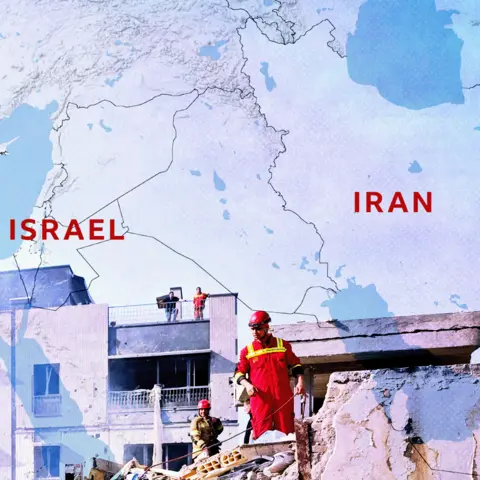 BBC
BBCIsrael has hit Iran with its biggest wave of air strikes in years, targeting the country's nuclear programme, and is promising to continue its attacks.
Senior military figures and nuclear scientists were killed in the overnight strikes and there are unconfirmed reports that civilians, including children, were also among the victims. In response, Iran launched about 100 drones towards Israel, most of which were intercepted, according to the Israeli military.
Israel said it had launched a another wave of strikes on Friday evening, with reports of more explosions in Iran, but the scale of that attack and the damage caused is not yet clear.
Video analysed by the BBC shows multiple strikes overnight in the capital Tehran as well near three reported military sites and Iran's main nuclear facility in Natanz.
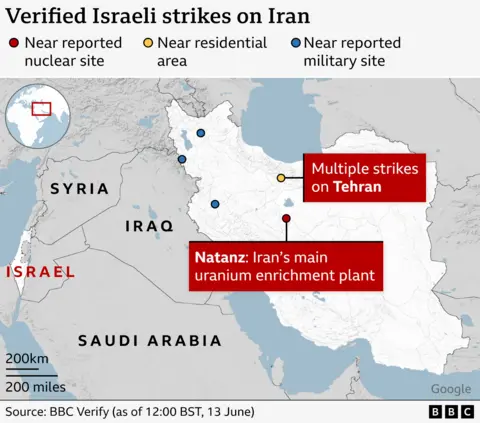
What has Israel targeted?
Israel's military said it had struck "dozens of military targets, including nuclear targets in different areas of Iran".
It later released a map of the sites it said it had hit which included nuclear facilities, missile facilities and radar defences, as well as scientists and military commanders.

Multiple strikes in Tehran
Explosions were first reported in Tehran at about 03:30 local time (01:00 BST), with Iranian state TV saying residential areas were among those hit.
Blasts were heard in the north-east of the capital and explosions reported at the airport, according to analysis by the US-based Institute for the Study of War.
The BBC has confirmed one of the locations as the site where Iranian media reported that former head of Iran's Atomic Energy Organisation Fereydoon Abbasi and nuclear scientist Mohammad Mehdi Tehranchi were killed. Iran has confirmed that at least six of its nuclear scientists were killed.

Iranian state media showed footage of fires burning in buildings and plumes of smoke rising from the city's skyline.
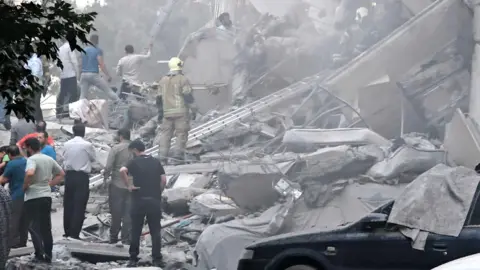 Getty
Getty EPA
EPAKey Iranian commanders have also been killed, including the chief of staff of the armed forces, and the commander-in-chief of the Islamic Revolutionary Guards Corps.
Nuclear facilities targeted
Among the other sites hit is Iran's main uranium enrichment facility at Natanz, in the centre of the country. Iranian state TV said it was struck several times, with pictures showing black smoke billowing from the site.
Israel's military said the strikes had caused significant damage.
The facility, about 225km (140 miles) south of Tehran, has enrichment plants above and below ground.
Uranium can be used to produce fuel for commercial nuclear power plants, research reactors or weapons depending on the level of enrichment.
The Institute for Science and International Security said satellite images show damage and destruction to several buildings around the complex, including the pilot fuel enrichment plant, which holds centrifuges and research facilities, as well as the on site electrical substation that provides power to the facility.
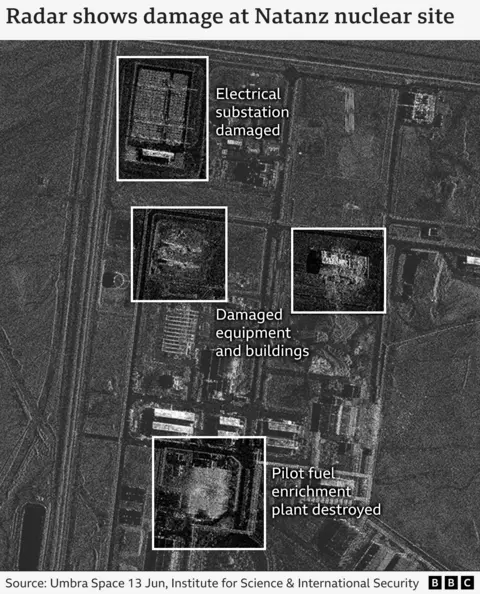
The global nuclear watchdog, the International Atomic Energy Agency (IAEA), said it was informed by Iranian authorities that there has been no increase in radiation levels at the Natanz plant.
Iran has long maintained that its nuclear programme is for civilian purposes only. It has several facilities around Iran, at least some of which have been targeted in the Israeli strikes.
But many countries - as well as the IAEA - are not convinced Iran's programme is for civilian purposes alone. It has nuclear facilities spread across much of the country.
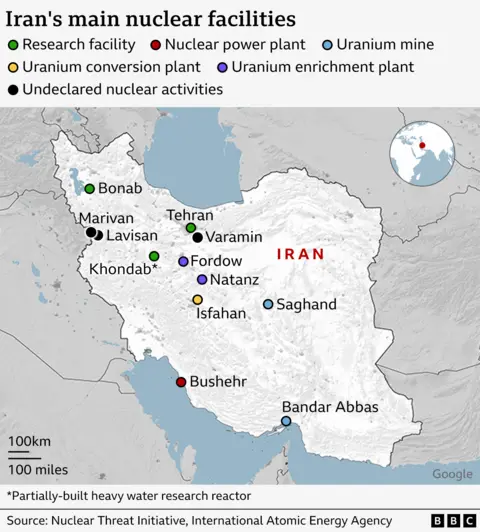
The strikes come as US talks over Iran's nuclear programme, which began in April, appear to have stalled in recent days. The next round of talks was scheduled for Sunday.
US President Donald Trump has urged Iran to "make a deal" on its nuclear programme, "before there is nothing left". Other world leaders have called for restraint on both sides.
IAEA head Rafael Grossi said nuclear facilities "must never be attacked" and such strikes have "serious implications for nuclear safety, security and safeguards, as well as regional and international peace and security".
In a statement to board members, he called "on all parties to exercise maximum restraint to avoid further escalation", saying "any military action that jeopardises the safety and security of nuclear facilities risks grave consequences for the people of Iran, the region, and beyond".
